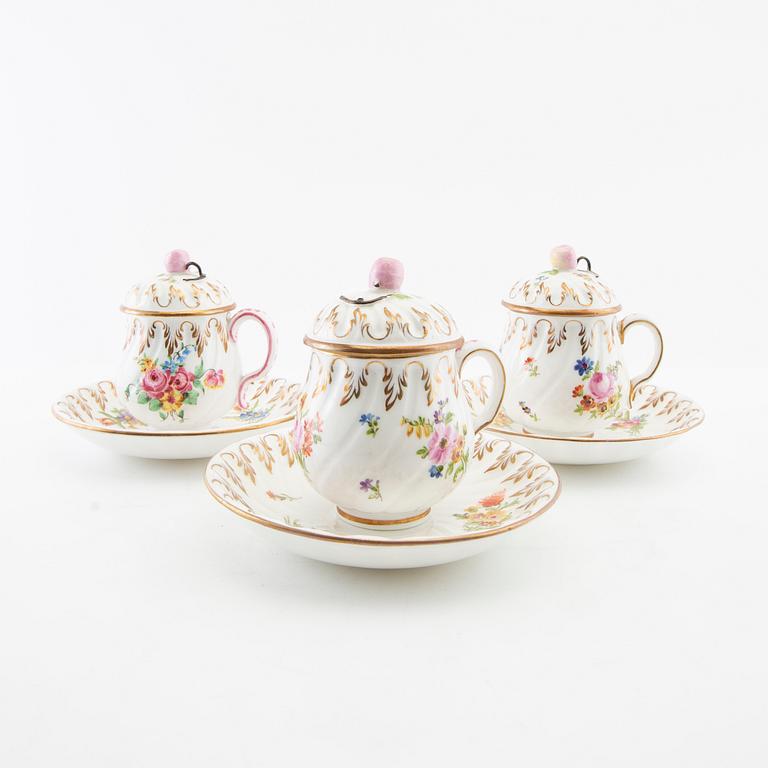Gustavsberg
A set of 11 porcelain roccoco style porcelain custard cups, Gustavsberg, Sweden circa 1900.
Eleven cups with twelve saucers, polychrome decoration of flowers, height ca. 9 cm
Wear commensurate with age and use. Chip.
Provenance
Hilma and Wilhelm Odelberg.
Industrialist Wilhelm Odelberg (1844-1925) led the Gustavsberg Porcelain Factory from 1869 to 1925.
More information
Wilhelm Odelberg was enrolled at Uppsala University in 1863. He became a sergeant at the Södermanland Regiment the same year, took the officer's examination in 1864, and became a second lieutenant that year. From 1865 to 1866, he studied languages and agriculture in Scotland, France, and Germany. He became a lieutenant at the regiment in 1873 and finally retired from the military in 1876, thereafter dedicating himself exclusively to running the Gustavsberg porcelain factory.
Odelberg had been the manager of the factory since 1869 and played a significant role in its development by introducing social measures to improve the workers' conditions, primarily the construction of housing for them, but also initiatives such as a grocery store with favourable prices for the employees. He also modernised the production at the factory, both technically and artistically.
Designer
Gustavsberg's ceramic factory was founded in 1825 at Värmdö. In the beginning the factory mainly created earthenware services with copper-printed decoration of English type. landscapes and castle motifs were common. By the mid 19th century the factory expanded and it began creating bone china and ironstone china. In addition to tableware, Gustavsberg manufactures decorative ceramics such as parian, majolica imitations, jasperware, and stoneware. From the 1800s Gustavsberg applies studio work with artistic collaborators such as Rörstrand. Wilhelm Kåge, Stig Lindberg, Lisa Larson, all of which have been tied to the factory. The designs which we most strongly associate with the factory is "Blå blom", "Pyro", "Argenta", "Berså", to name a few.
Read more














































